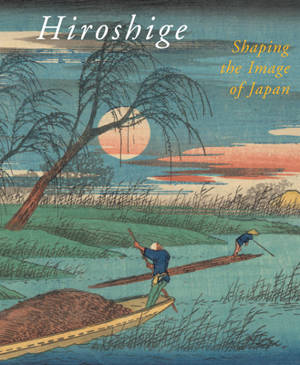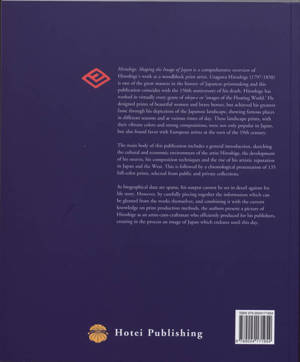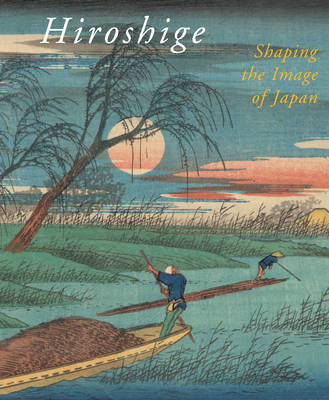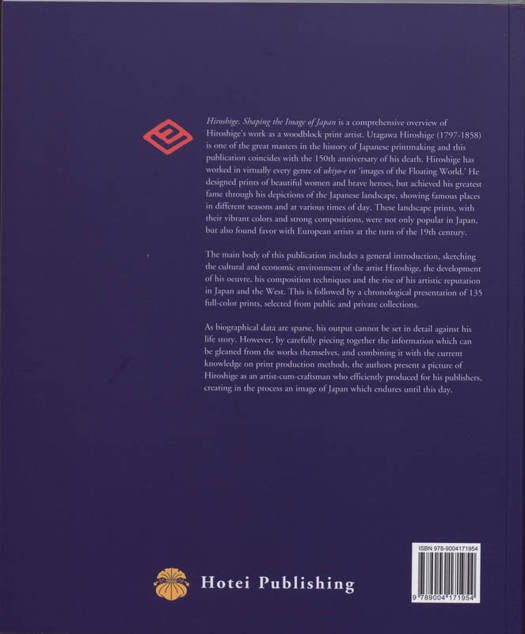
- Afhalen na 1 uur in een winkel met voorraad
- Gratis thuislevering in België vanaf € 30
- Ruim aanbod met 7 miljoen producten
- Afhalen na 1 uur in een winkel met voorraad
- Gratis thuislevering in België vanaf € 30
- Ruim aanbod met 7 miljoen producten
Zoeken


Hiroshige: Shaping the Image of Japan
shaping the image of Japan
Chris Uhlenbeck, Marije Jansen
Paperback | Engels
€ 49,95
+ 99 punten
Omschrijving
Hiroshige Shaping the Image of Japan
is a comprehensive overview of Hiroshige's work as a woodblock print artist. Utagawa Hiroshige (1797-1858) is one of the great masters in the history of Japanese printmaking and this publication coincides with the 150th anniversary of his death. Hiroshige has worked in virtually every genre of ukiyo-e or 'images of the floating world'. He designed prints of beautiful women and brave heroes, but achieved his greatest fame through his depictions of the Japanese landscape, showing famous places in different seasons and at various times of day. These landscape prints, with their bright colors and strong compositions, were not only popular in Japan, but also found favor with European artists at the turn of the 19th century.
The main body of this publication includes a general introduction, sketching the cultural and economic environment of the artist Hiroshige, the development of his oeuvre, and the rise of his his artistic reputation in Japan and the West. This is followed by a chronological presentation of 140 full-color prints, selected from public and private collections.
Biographical data are sparse and only very few details of his life help explain the nature of his output. However, by carefully piecing together the information which can be gleaned from the works themselves, and combining it with the current knowledge on print production methods, the authors present a picture of Hiroshige as an artist-cum-craftsman who efficiently produced for his publishers, creating in the process an image of Japan which endures until this day.
is a comprehensive overview of Hiroshige's work as a woodblock print artist. Utagawa Hiroshige (1797-1858) is one of the great masters in the history of Japanese printmaking and this publication coincides with the 150th anniversary of his death. Hiroshige has worked in virtually every genre of ukiyo-e or 'images of the floating world'. He designed prints of beautiful women and brave heroes, but achieved his greatest fame through his depictions of the Japanese landscape, showing famous places in different seasons and at various times of day. These landscape prints, with their bright colors and strong compositions, were not only popular in Japan, but also found favor with European artists at the turn of the 19th century.
The main body of this publication includes a general introduction, sketching the cultural and economic environment of the artist Hiroshige, the development of his oeuvre, and the rise of his his artistic reputation in Japan and the West. This is followed by a chronological presentation of 140 full-color prints, selected from public and private collections.
Biographical data are sparse and only very few details of his life help explain the nature of his output. However, by carefully piecing together the information which can be gleaned from the works themselves, and combining it with the current knowledge on print production methods, the authors present a picture of Hiroshige as an artist-cum-craftsman who efficiently produced for his publishers, creating in the process an image of Japan which endures until this day.
Specificaties
Betrokkenen
- Auteur(s):
- Uitgeverij:
Inhoud
- Aantal bladzijden:
- 112
- Taal:
- Engels
Eigenschappen
- Productcode (EAN):
- 9789004171954
- Verschijningsdatum:
- 14/11/2008
- Uitvoering:
- Paperback
- Formaat:
- Trade paperback (VS)
- Afmetingen:
- 244 mm x 292 mm
- Gewicht:
- 657 g

Alleen bij Standaard Boekhandel
+ 99 punten op je klantenkaart van Standaard Boekhandel
Beoordelingen
We publiceren alleen reviews die voldoen aan de voorwaarden voor reviews. Bekijk onze voorwaarden voor reviews.









